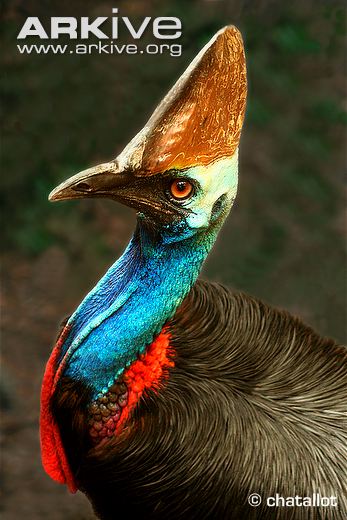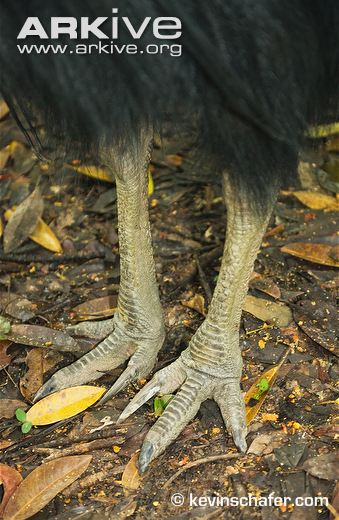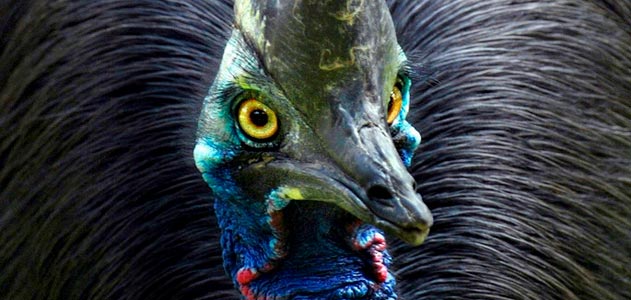Adaptation (Forms and Functions)
Adult Southern Cassowaries posses protrusion on its head called a casque. The casque of the cassowary closely resembles a trapezoid with an average length of 17cm, an average height of 15 cm, and an average width of 7cm. It is thought that the casque provides protection to the cassowary. Cassowaries prefer thick vegetation for their habitat and the casque provides much needed protection, especially when running at high speeds it is not uncommon for the cassowary to run into small trees. The casque also helps protect the skulls from such impacts (Crome, 1987).

Picture 1. in this photo you can clearly see the casque on top of
the head.
All cassowaries, including the Southern Cassowary have long
claws/talons on their feet. Often called the modern
Velociraptor, cassowaries should be approached with care. They
utilize their knife like tools by jumping upwards then striking
forward and downwards slashing at its target. As you can
see in the photo below, the inner talons of the cassowary are very long
and sharp.

Picture 2. The inner talons are of interest as
noted above.
The Southern Cassowary has two powerful legs similar to that of its relatives, the Emu and Ostrich. Biologists have been enthralled with the large flightless birds for decades. It was originally thought that they stemmed from one common ancestor or monophyletic; however, recent DNA genome analysis has found that flightless birds are actually polyphyletic (Harshman,200). Probable explanations as to why the cassowary evolved to a flightless bird are the lack of predators it faced. When a bird has on predators, it no longer needs to fly, especially when its food source is within easy reach like the fruits cassowaries eat.
Click here to advance to Reproduction
Click here to return Home
